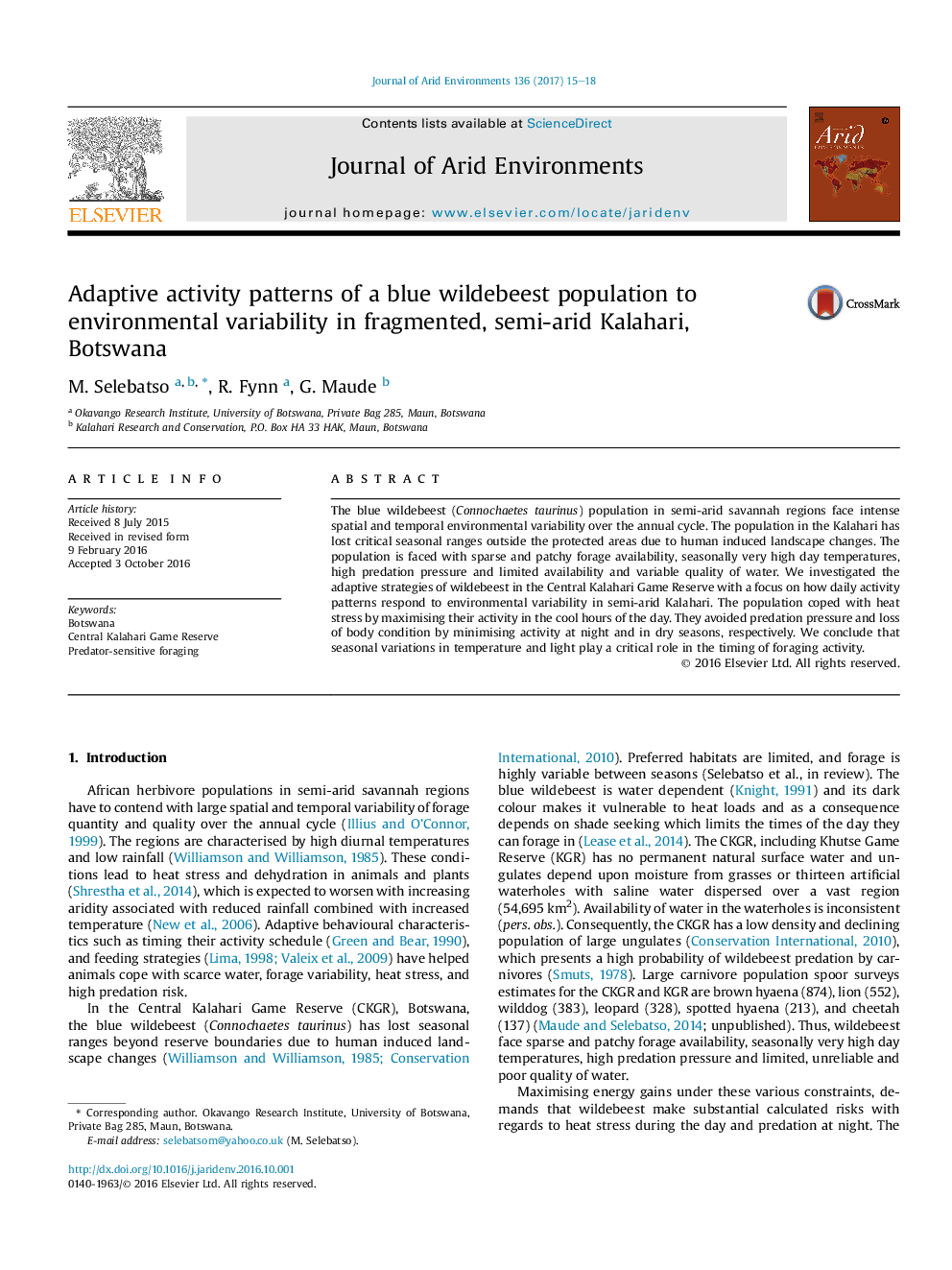| Article ID | Journal | Published Year | Pages | File Type |
|---|---|---|---|---|
| 6303098 | Journal of Arid Environments | 2017 | 4 Pages |
Abstract
The blue wildebeest (Connochaetes taurinus) population in semi-arid savannah regions face intense spatial and temporal environmental variability over the annual cycle. The population in the Kalahari has lost critical seasonal ranges outside the protected areas due to human induced landscape changes. The population is faced with sparse and patchy forage availability, seasonally very high day temperatures, high predation pressure and limited availability and variable quality of water. We investigated the adaptive strategies of wildebeest in the Central Kalahari Game Reserve with a focus on how daily activity patterns respond to environmental variability in semi-arid Kalahari. The population coped with heat stress by maximising their activity in the cool hours of the day. They avoided predation pressure and loss of body condition by minimising activity at night and in dry seasons, respectively. We conclude that seasonal variations in temperature and light play a critical role in the timing of foraging activity.
Keywords
Related Topics
Physical Sciences and Engineering
Earth and Planetary Sciences
Earth-Surface Processes
Authors
M. Selebatso, R. Fynn, G. Maude,
